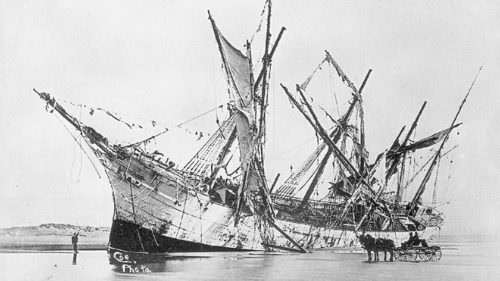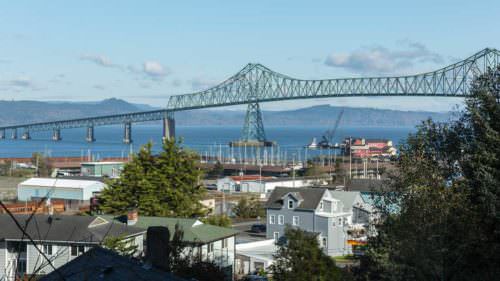An ideal day for Mark Schacher starts and ends on the water — specifically, the briny and bountiful Columbia River. Born and raised in the port town of Astoria, Schacher grew up steeped in maritime history and a stalwart seafaring community. “I always knew I wanted to work on boats,” he says.
Today, decades later with careers that have taken him on and off the water, he runs a tugboat, the Arrow No 2. It’s not just any tugboat — this celebrated craft navigated the perilous waters of the Columbia for an impressive 50 years before it was retired and made available as surplus equipment in 2016. “About a year went by and I was surprised nobody was doing anything with the boat yet — it’s such an icon,” Schacher says.
There were rumors that the tug might end up decorating a traffic roundabout, but Schacher had a vision to get himself on the river full-time — so he decided to purchase it. After devoting the past four years to rebuilding and restoring the historic boat, Schacher is excited to share it with other river enthusiasts and history buffs. Visitors can book a personal tour with Schacher through his business, Arrow Tugboat & Tour Company, which specializes in historic tours of the working waterfronts along the Lower Columbia River.
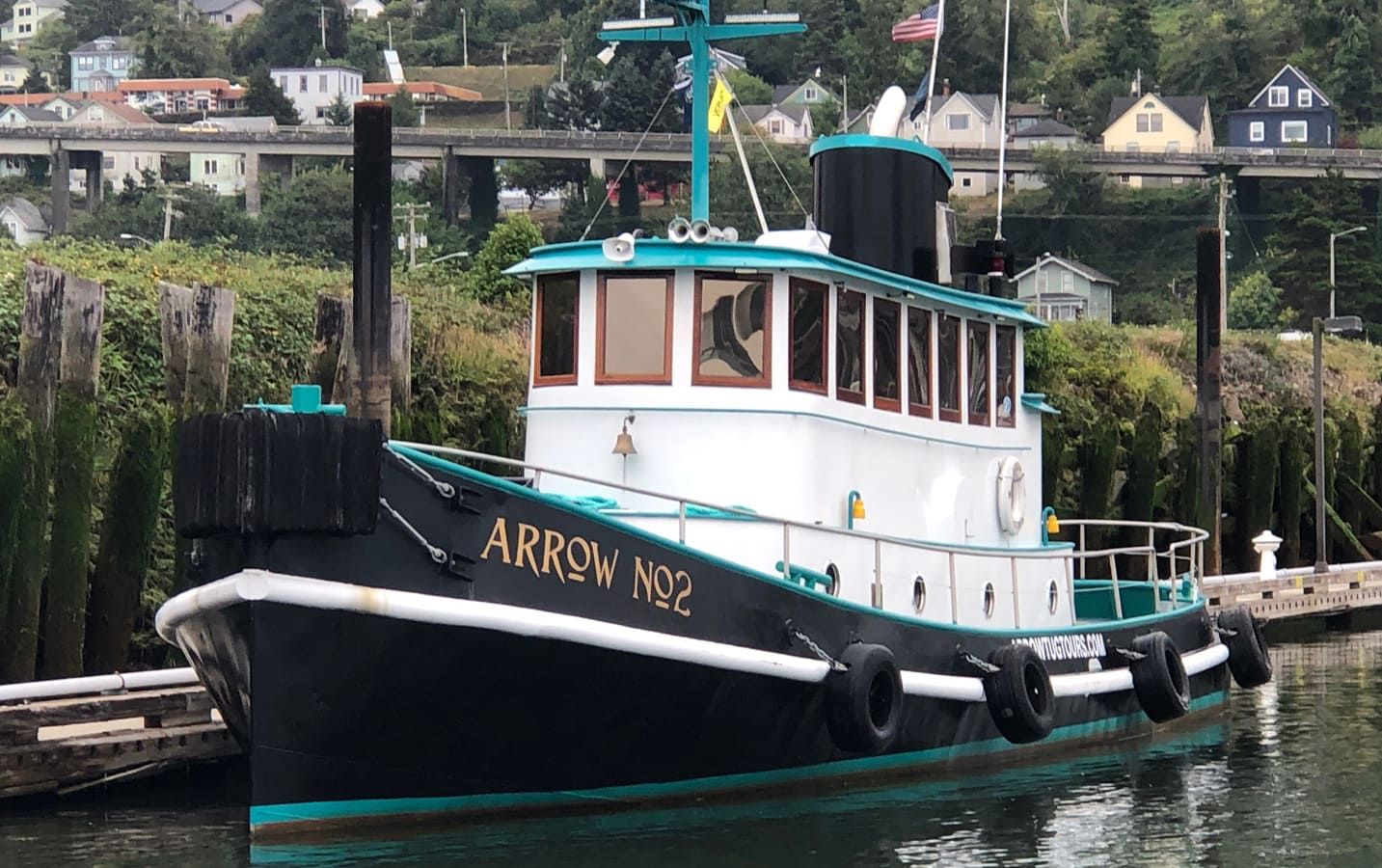
Astoria’s Photogenic Tugboat
At first glance, Arrow No. 2 may look like any other friendly river vessel. Built in 1960 by the Nichols Boat Works of Hood River, the vessel evokes nostalgia. “It’s classic looking,” says Schacher, “a version of the tugboat you’d find in a childhood book about boats.” Versatile and powerful, tugboats perform a wide variety of jobs, from assisting ships to pulling barges around the harbor or even across the ocean.
“Some people think this was the most photographed boat on the West Coast because it ran 24 hours a day, seven days a week right in front of Astoria,” says Schacher. He’s found hundreds of pictures of the Arrow No. 2 online, along with paintings. A friend even spotted a picture of the colorful tug on the wall of a diner in New York City.
A small-town celebrity, the 53-foot tug was a workhorse. She made an estimated 250,000 trips to transfer bar and river pilots so they could navigate ships across the treacherous Columbia Bar and upriver during her career from 1962 to 2012. Local legend hails the Arrow No. 2 as the oldest working pilot launch in North America.
But to Schacher it’s more than a tug; it’s a porthole into the region’s salient seafaring history. For him, viewing Astoria by boat provides an immersive experience on the Columbia River and a fresh perspective on the pivotal role the waterway has played generation after generation. “All of the commerce and development revolved around the river,” he says. From the fur trade to the lumber boom, followed by a period when Astoria was deemed the salmon-canning capital of the world. “So many important things happened here and so many of them have come and gone,” he says. “Like the tide goes in, the tide goes out.”
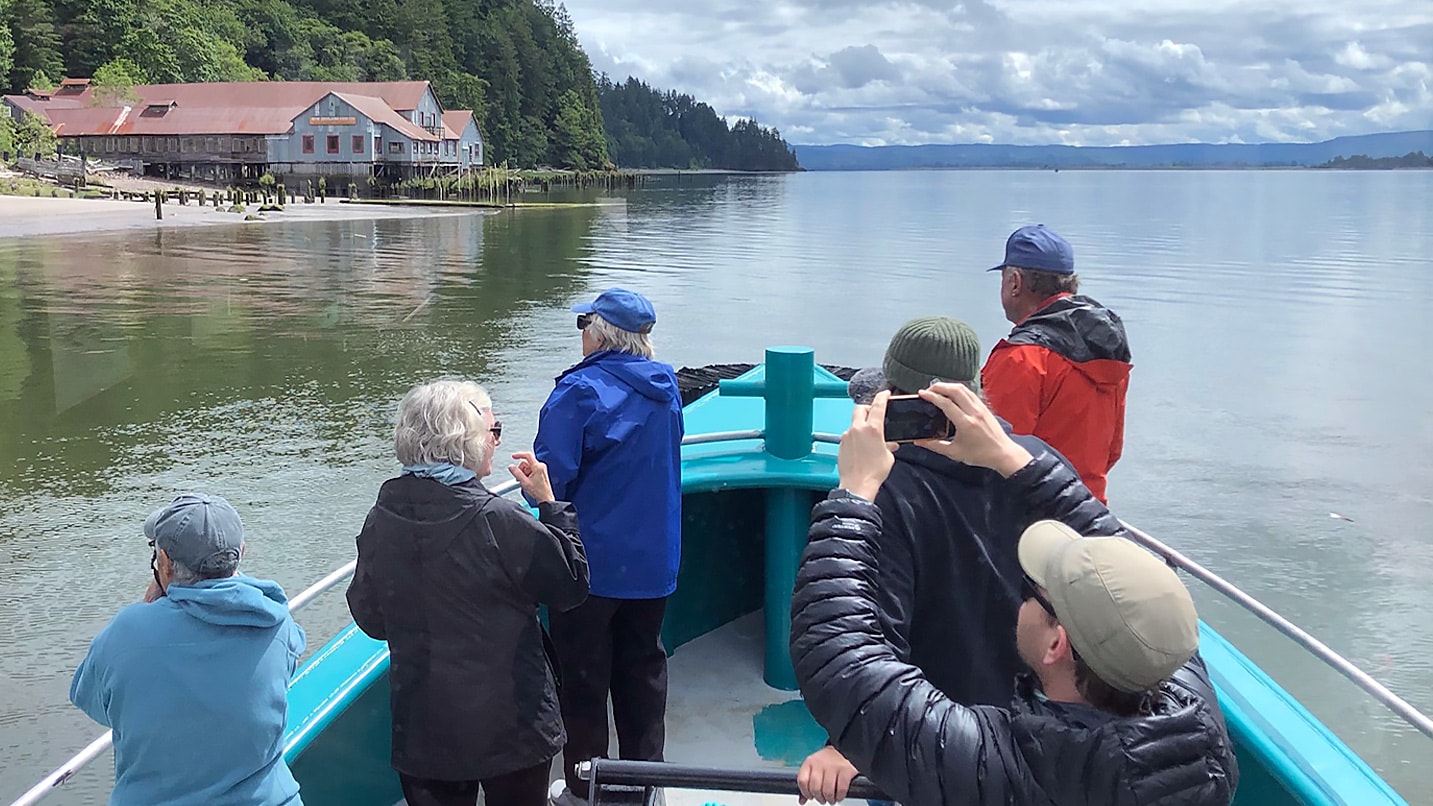
A River Steeped in History
History is Schacher’s second passion, which makes this new venture seem like kismet. When he’s not on the boat, he can be found combing through the archives at the Columbia River Maritime Museum and the Clatsop County Heritage Museum, gleaning interesting facts and stories to share on the interpretive tours.
On especially blustery days, he has a slideshow that illuminates the history of the area’s working waterfront through old photographs he’s collected over the years. For fellow history buffs, he recommends Sara’s Old Photos, a Facebook page run by Sara Meyer, a local who co-owned a photography store in Astoria with her husband until they retired. She now devotes time to digitizing old images collected over the years in an effort to preserve the region’s visual heritage.
Whether it’s a rare blue-sky day or a foggy one, the illustrious tug is always picture-ready from the dock at the Skipanon Marina in Warrenton. After a tour of the engine room below deck and the beautifully renovated wheelhouse, Schacher glides between the local commercial fishing boats that quietly line the harbor, waving to locals he knows by name.
As the boat criss-crosses waves northward toward Astoria, the best view is on the front deck, where you can marvel at the elegance of the 4-mile Astoria-Megler Bridge. “I never tire of this view,” says Schacher. On the right, a slope of forested hills rises behind colorful Victorians and weathered fishing piers. The tug tackles river waves at a steady clip, and waterfront landmarks old and new drift by. One of the landmarks is a structure locals call Big Red, a former drying shed for fishing nets that dates back to 1897.
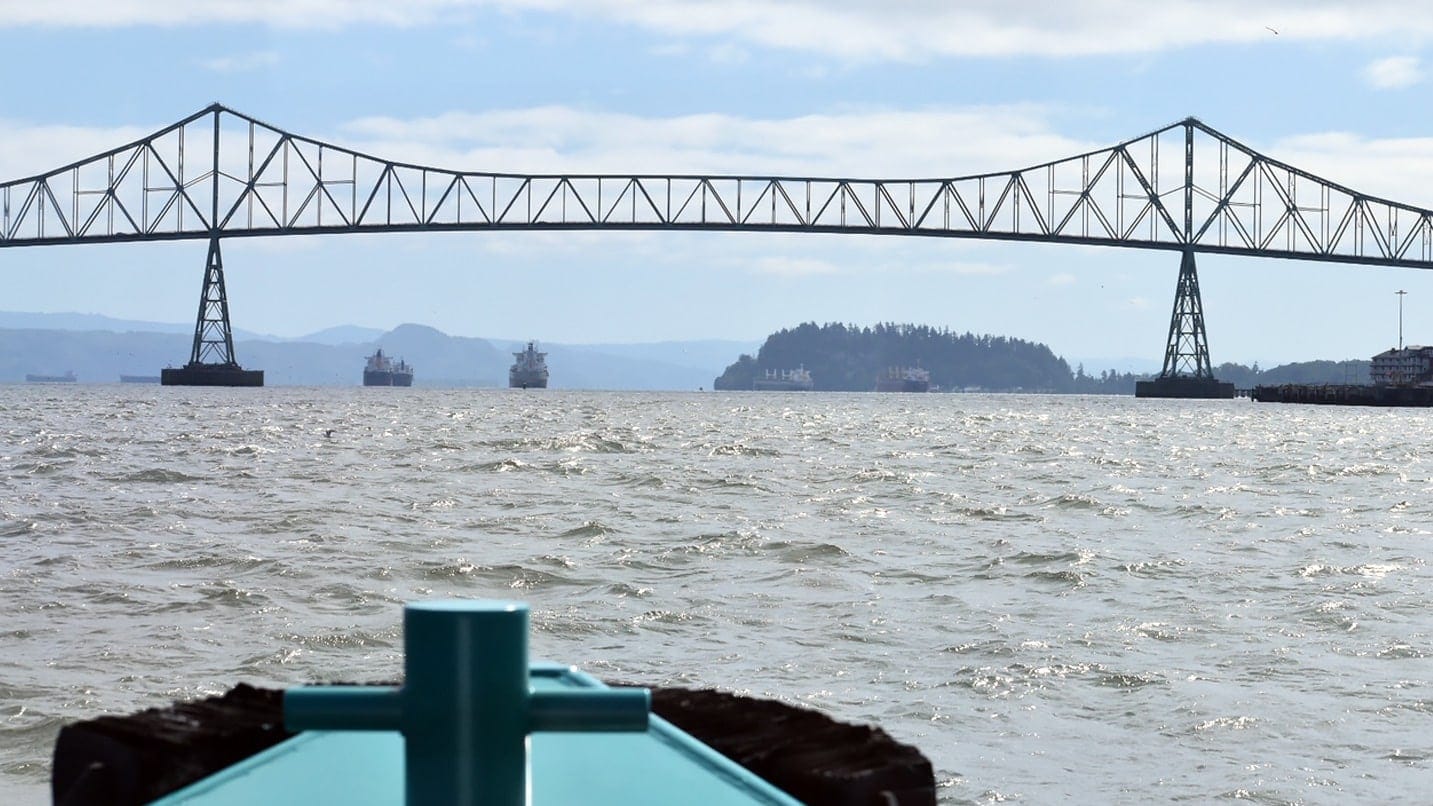
The distinct yellow block of Buoy Beer Co. breathing new life into a century-old cannery building is a reminder that at one time there were two dozen salmon canneries dotting the river. Salmon once ran so thick in these waters that they were the primary food source for local Tribes, and more than 2,500 gillnetters fished on the Lower Columbia in 1904.
Sea lions bark with enthusiasm, the unofficial soundtrack for the town, as the boat passes by the Hanthorn Cannery Museum, located on the site of Astoria’s oldest fish-processing plant. “There’s even more to see at low tide,” Schacher says. “That’s when the bones of Astoria are exposed and you can spot everything from the remnants of shipyard railways to an old broiler from the White Star Cannery.”
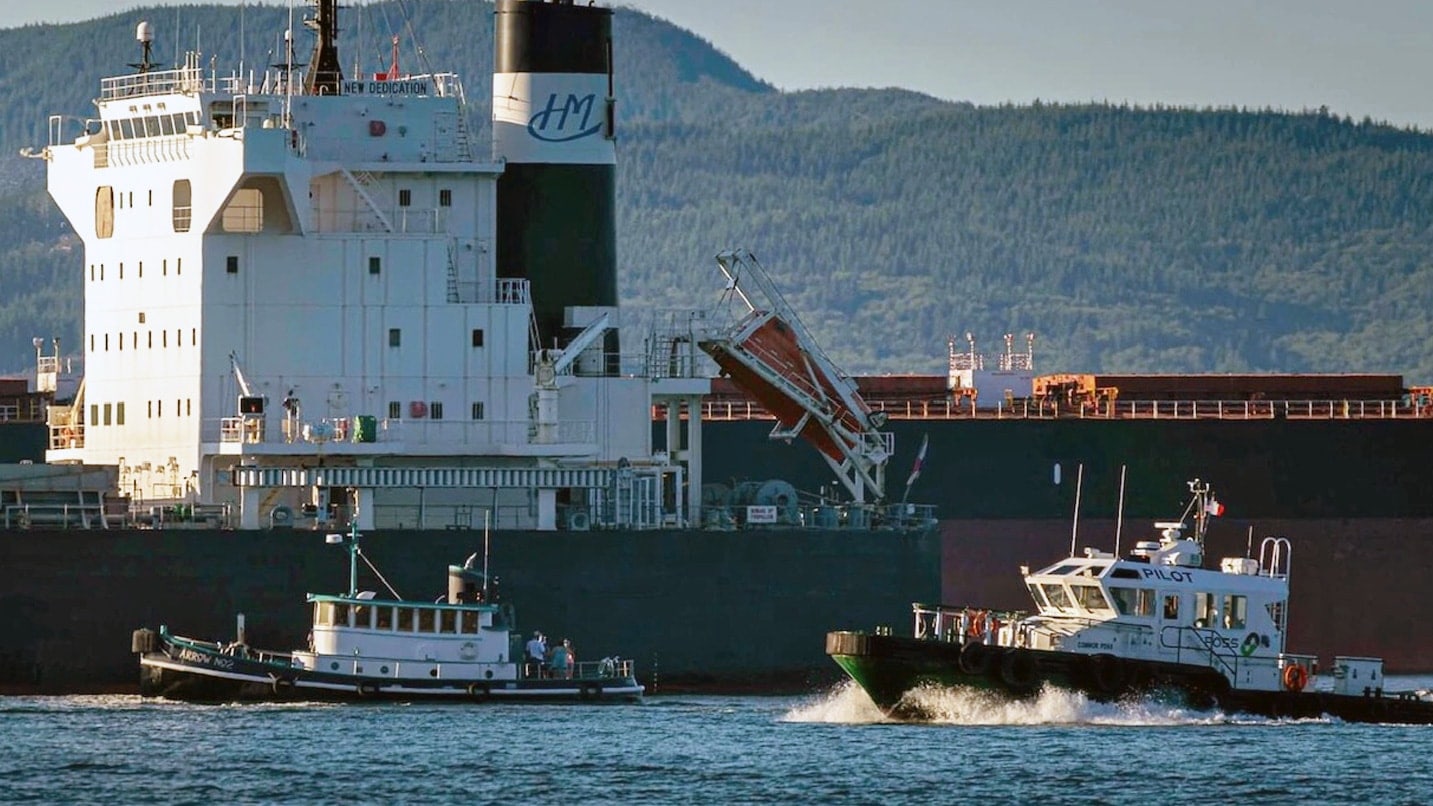
A Perilous Passage
A trip to Astoria wouldn’t be complete without learning about the Columbia River Pilots, who have guided ships on the river for more than 150 years. “If the timing is just right, we might get to see a pilot transfer in action,” Schacher says. The tug slows near the Pier 14 Pilot Station, and to the left, a trio of massive cargo ships rises from the waves, their vibrant red hulls spanning the length of four football fields. The colossal carriers come from all over the world, transporting goods ranging from grain and logs to automobiles and petroleum, headed to ports in Portland and beyond.
In order to keep shipping vessels moving in and out safely, expert pilots wait at the mouth of the river to board the ships and steer them through the Columbia River Bar, where the currents crash with the swells of the Pacific Ocean that can climb as high as 40 feet in the winter. It’s deemed one of the world’s most dangerous bar crossings due to frequent fog and storms, adverse winds, and unpredictable weather. You can pay tribute to the generations of bar pilots and other seafarers’ lives lost at the Astoria Maritime Memorial, on the riverwalk under the Astoria-Megler Bridge.
Schacher confirms via radio that a pilot transfer is happening, so he slows the tug and sets it up with a clear view. He watches from a distance as the agile pilot boat sidles alongside the carrier, both vessels cruising side-by-side at about 8 to 10 knots.
In seconds the river pilot climbs up the rope ladder, and minutes later the bar pilot efficiently climbs off. It’s only a sliver of this very risky and highly technical job on view, but it adds a real-world dimension after catching the “Crossing the Bar” exhibit at the Maritime Museum.
The winds pick up on the tugboat’s cruise back, and a serene quiet settles across the pink-hued sky. Schacher’s wife, Jeanette, points out an eagle swooping down to snatch a fish from the river. A cluster of slender black cormorants dives and bobs in the currents. In the course of three hours, the tugboat tour has provided a heightened sense of place, coasting by time capsules of Astoria’s past and stirrings of the town’s evolving future.
As Schacher envisioned, there’s much more to the tug than a simple voyage. He says, with his hands on the wheel, “We’ll be back on the water tomorrow.”
